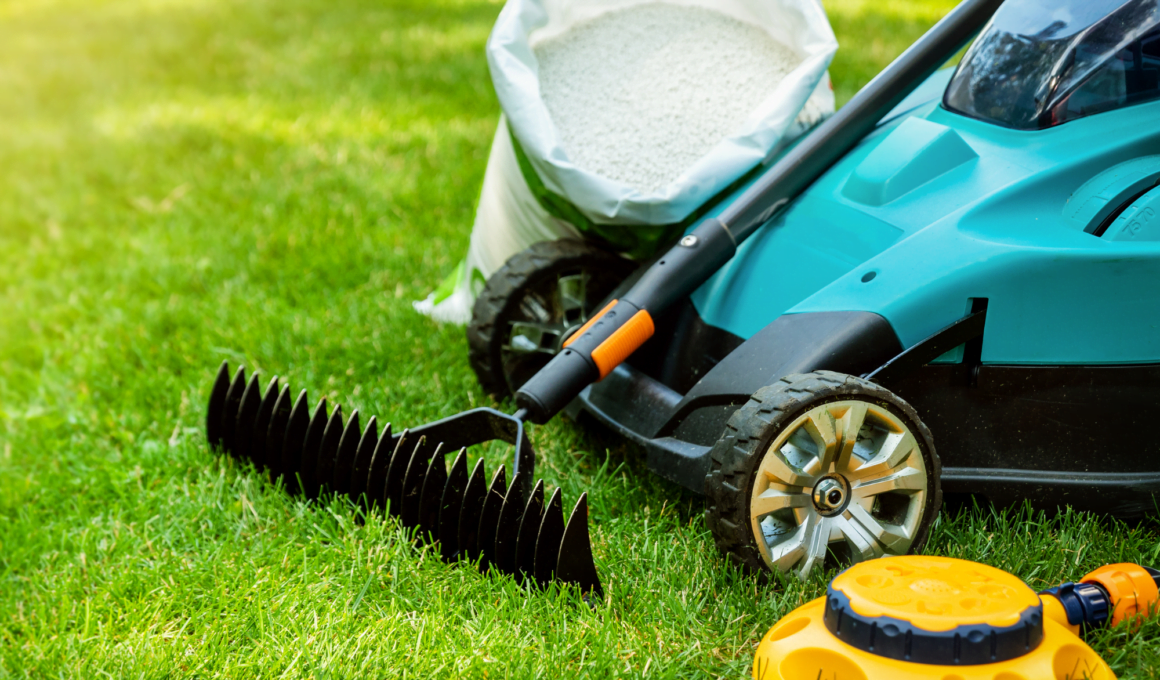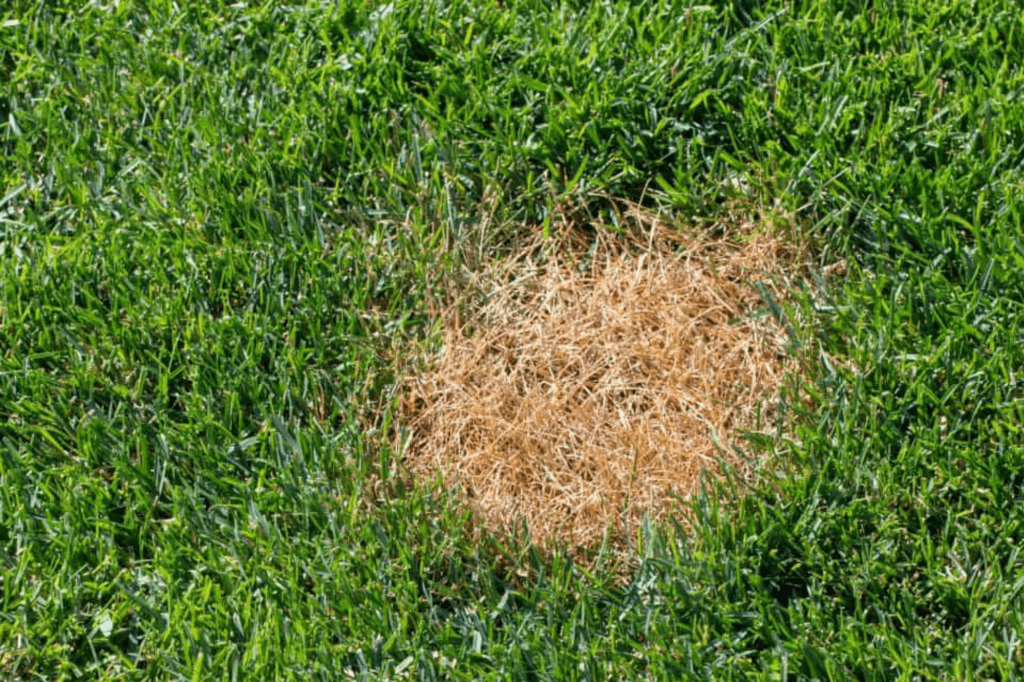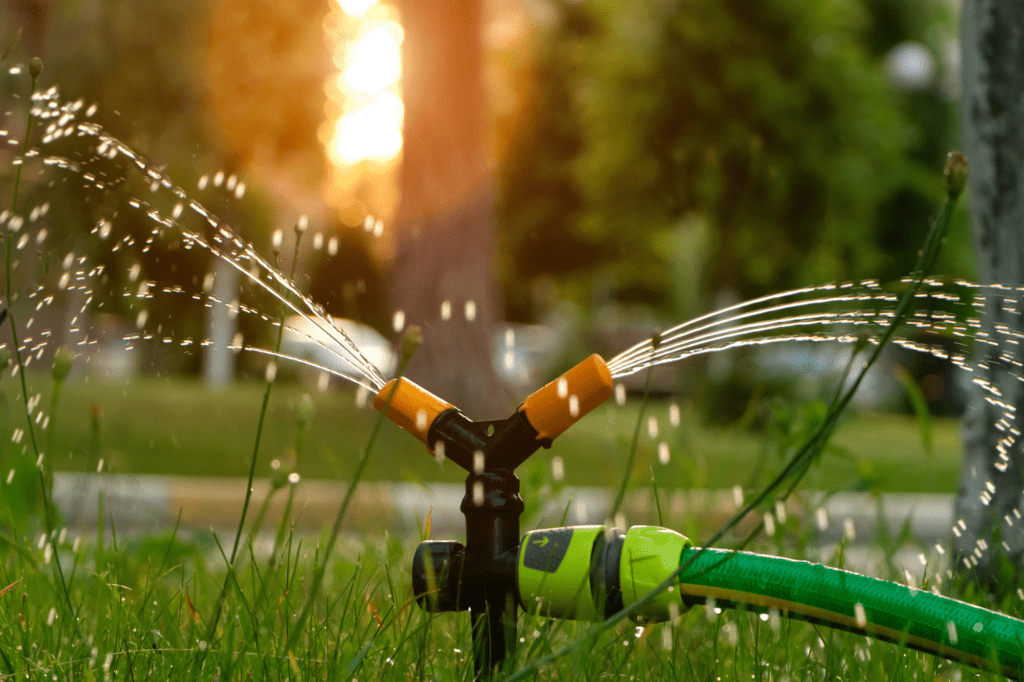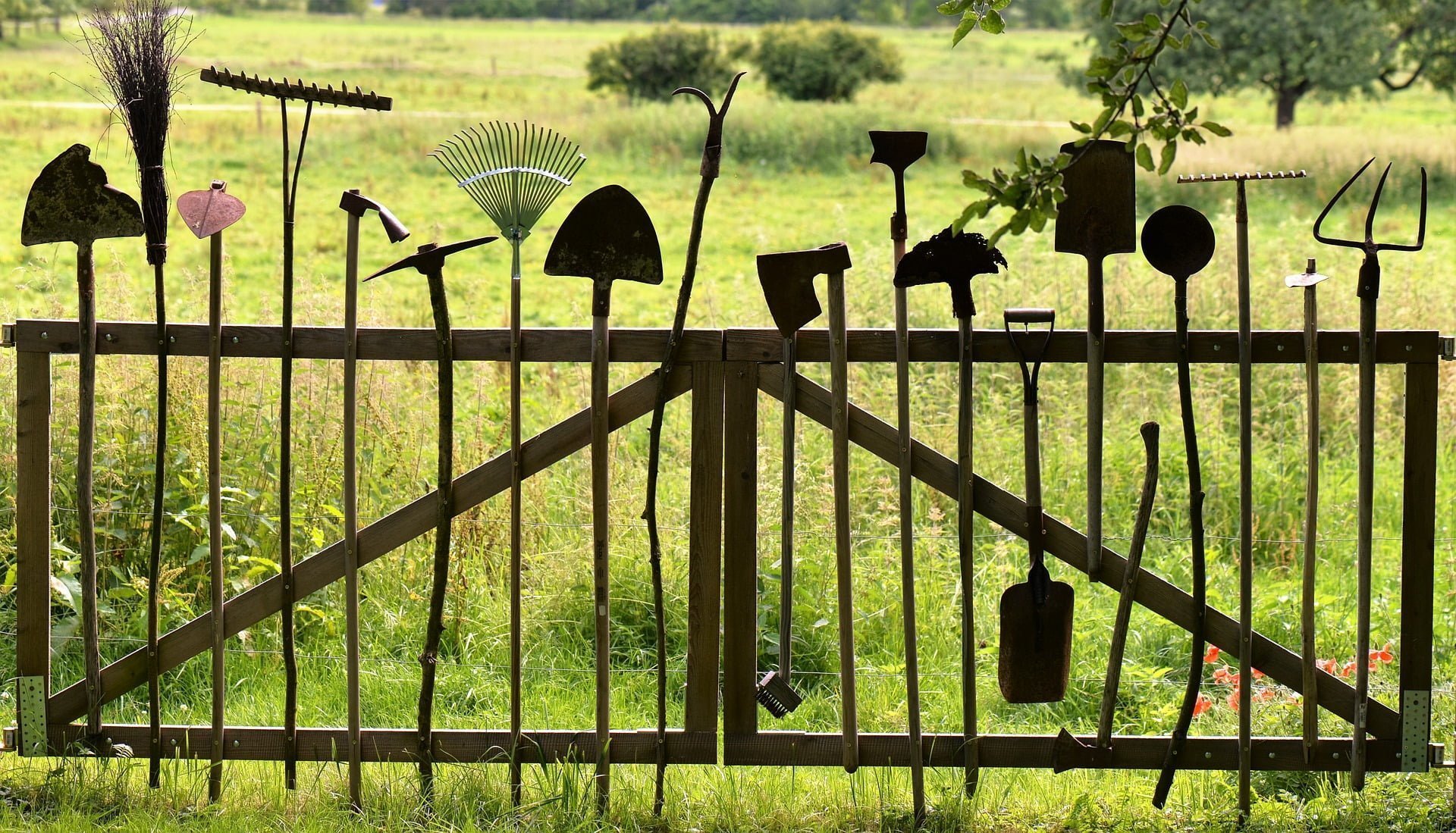Are you worried that your lawn is suffering from over-fertilization? Don’t panic! In just 5 basic steps, you can reverse the damage and restore the health of your lawn.
First, assess the damage by closely examining your grass for signs of over-fertilization, such as yellowing or burnt patches.
Next, remove the excess fertilizer by gently raking or brushing it off the surface of the soil.
Then, water and flush the soil to help dilute and remove any remaining fertilizer.
After that, aerate the lawn to improve soil drainage and promote better nutrient absorption.
Once the soil is ready, apply organic amendments to replenish nutrients naturally.
Finally, overseed and fertilize properly to ensure a lush and vibrant lawn.
By following these steps and practicing proper lawn care techniques, you can easily restore the health of your lawn and maintain its beauty for years to come.
Quick Summary
- Assess the damage by examining the grass for yellowing or burnt patches.
- Remove excess fertilizer by raking or brushing it off the soil surface.
- Water and flush the soil to dilute and remove any remaining fertilizer.
- Aerate the lawn to improve soil drainage and nutrient absorption.
Assess the Damage
Take a walk across your once lush and vibrant lawn, evaluating the damage caused by your overzealous fertilizing, as you cringe at the sight of burnt, yellowed grass patches. It may be disheartening to see your lawn in such a sorry state, but fear not! There are ways to reverse the damage and restore your lawn to its former glory.
To begin the repair process, it’s crucial to assess the extent of the damage. Look for any areas that appear dry, brittle, or discolored. These are signs that your lawn has been over-fertilized. Take note of the size and location of these patches, as this will help you determine the best course of action.
Once you have assessed the damage, you can explore your repair options. Depending on the severity of the over-fertilization, you may need to take different approaches. For minor damage, simply watering the affected areas thoroughly can help flush out excess nutrients. For more severe cases, you may need to consider reseeding or even replacing the damaged sections of your lawn.
In addition to repairing the damage, it’s important to take preventive measures to avoid over-fertilization in the future. This includes following the recommended fertilizer application rates, reading and understanding the instructions on the fertilizer packaging, and properly maintaining your lawn through regular watering and mowing.
By taking these steps, you can reverse the effects of over-fertilization and ensure a healthy, vibrant lawn for years to come.
Remove Excess Fertilizer
To rectify the situation, simply extract the surplus fertilizer from your yard. Over-fertilization can have detrimental effects on your lawn, but by removing the excess fertilizer, you can restore balance and health to your soil. Start by conducting a soil test to determine the nutrient levels and pH of your lawn. This will help you understand the extent of the damage and guide you in the remediation process.
Once you have assessed the soil, it’s time to remove the excess fertilizer. Here are five steps to effectively remove the surplus and restore your lawn:
- Dilution: Water your lawn thoroughly to help flush out the excess fertilizer. This will help prevent further damage to the grass and surrounding plants.
- Core Aeration: Use a core aerator to create small holes in the soil. This will improve air circulation and allow the fertilizer to break down more quickly.
- Topdressing: Apply a thin layer of compost or topsoil over your lawn. This will help dilute the excess fertilizer and provide additional nutrients to the soil.
- Natural Decomposition: Allow nature to take its course and let the excess fertilizer break down naturally over time. Avoid applying any more fertilizer until the nutrient balance has been restored.
- Regular Maintenance: Proper lawn care practices, such as mowing at the correct height and watering appropriately, will help promote healthy growth and prevent future over-fertilization.
By following these steps, you can effectively remove the excess fertilizer from your lawn and restore its health. Remember to always prioritize safety and follow the instructions on fertilizer packages to prevent over-fertilization in the future.
Water and Flush the Soil
Watering and flushing the soil is essential in the process of restoring the health and balance of your lawn after over-fertilization. When your lawn has been over-fertilized, excess nutrients can accumulate in the soil, causing harm to your grass. To reverse this damage, you need to rehydrate the soil and restore the nutrient balance.
Start by thoroughly watering your lawn. This will help dilute the excess fertilizer and flush it out of the soil. Make sure to water deeply, allowing the water to penetrate the root zone. This will also encourage the roots to grow deeper, making them more resilient and better able to absorb nutrients.
After watering, give the soil some time to rest and allow the excess water to drain away. This will help prevent waterlogging and ensure that the soil is not overly saturated. You can also aerate the soil to improve its drainage and allow for better oxygen circulation.
To further promote soil rehydration, consider using organic matter such as compost or peat moss. These materials can help retain moisture in the soil and provide essential nutrients to your lawn. Spread a thin layer of compost or peat moss over the lawn and gently rake it in.
By following these steps, you can effectively water and flush the soil, restoring the health and nutrient balance of your over-fertilized lawn. Remember to monitor your lawn’s progress and adjust your watering schedule accordingly. With patience and proper care, your lawn will regain its lush and vibrant appearance.
Aerate the Lawn
After you’ve given your lawn a good watering, it’s time to let it breathe by aerating the soil. Aerating your lawn is an essential step in reversing the effects of over-fertilization. It helps improve drainage and reduces compaction, allowing for better absorption of nutrients and oxygen by the grass roots.
Here are three important reasons why you should aerate your lawn:
- Enhances water absorption: Aeration creates small holes in the soil, allowing water to penetrate deeply. This helps prevent water runoff and ensures that the grass gets the moisture it needs to thrive.
- Promotes root growth: By breaking up compacted soil, aeration encourages the growth of healthy grass roots. Stronger roots result in a more resilient lawn that can better withstand stress and recover from over-fertilization.
- Increases nutrient uptake: When the soil is compacted, nutrients have a harder time reaching the roots. Aeration opens up the soil, making it easier for the grass to absorb essential nutrients, leading to a healthier lawn.
To aerate your lawn safely, use a manual or mechanical aerator that pulls out small plugs of soil. Avoid aerating during drought conditions or when the soil is extremely wet to prevent further damage. Repeat the process in different directions to ensure thorough coverage.
By aerating your lawn, you’ll be on your way to reversing the effects of over-fertilization and promoting a lush, vibrant lawn.
Apply Organic Amendments
Applying organic amendments can significantly improve the health and vitality of your lawn, providing it with essential nutrients for optimal growth. If you’ve over-fertilized your lawn and need to reverse the damage, using organic fertilizer and natural lawn amendments is a safe and effective solution.
Organic fertilizer, such as compost or well-rotted manure, can help restore balance to your over-fertilized lawn. These natural sources of nutrients release slowly into the soil, preventing further damage caused by excess chemicals. Spread a thin layer of organic fertilizer evenly across your lawn, making sure not to apply too much. This will ensure that your grass receives the necessary nutrients without overwhelming it.
In addition to organic fertilizer, incorporating natural lawn amendments can also aid in the recovery process. These amendments, like bone meal or kelp meal, are rich in essential minerals and trace elements that promote healthy growth. Simply sprinkle the amendments evenly over your lawn, paying extra attention to the areas that have been most affected by the over-fertilization.
By using organic fertilizer and natural lawn amendments, you can reverse the damage caused by over-fertilization and restore the health of your lawn. Remember to always follow the instructions on the product labels and avoid over-applying any amendments. With a little patience and care, your lawn will soon regain its lush green appearance and thrive once again.
Overseed and Fertilize Properly
To ensure a healthy and vibrant lawn, it’s important to properly overseed and fertilize using the right techniques and products. Proper overseeding techniques can help reverse the effects of over-fertilization and promote a lush and green lawn. Here are some important tips to follow:
- Choose the right grass seed: Look for a high-quality seed that’s suitable for your climate and soil type. This’ll ensure better germination and growth.
- Prepare the soil: Before overseeding, make sure to loosen the top layer of soil and remove any debris. This’ll create a better environment for the seeds to establish.
- Spread the seeds evenly: Use a spreader to distribute the seeds evenly across the lawn. This’ll prevent overcrowding and patchy growth.
- Water regularly: After overseeding, it’s crucial to keep the soil consistently moist. Water deeply and frequently to encourage seed germination and root development.
- Apply balanced fertilizer: Along with overseeding, it’s important to fertilize your lawn with a balanced fertilizer. This’ll provide the necessary nutrients for healthy growth without causing excessive growth.
Proper overseeding techniques, combined with balanced fertilization, will help reverse the effects of over-fertilization and promote a greener and healthier lawn. Remember to follow these steps and enjoy a beautiful and safe outdoor space.
Practice Proper Lawn Care Techniques
Maintaining a lush and vibrant lawn requires practicing proper lawn care techniques. To reverse the effects of over-fertilization and ensure the health of your lawn, it’s essential to follow these steps.
First, proper mowing is crucial. Set your mower to the correct height and mow regularly, ensuring you don’t remove more than one-third of the grass blade. This promotes healthy growth and prevents stress on the lawn.
Secondly, conduct a soil test. Testing the soil will provide valuable information about its nutrient levels and pH balance. This knowledge will guide you in selecting the right fertilizers and amendments to restore the soil’s health.
Additionally, it’s essential to water your lawn deeply and infrequently. This encourages deep root growth and helps the grass withstand drought and other stressors.
Lastly, avoid excessive foot traffic on your lawn, as it can compact the soil and hinder the grass’s growth.
By following these proper lawn care techniques, you can reverse the over-fertilization and maintain a beautiful and healthy lawn.
Monitor and Maintain the Health of Your Lawn
Now that you’ve learned about practicing proper lawn care techniques, let’s dive into the next step: monitoring and maintaining the health of your lawn.
It’s crucial to keep a close eye on your lawn to prevent over-fertilization and ensure its well-being. Over-fertilization can have detrimental effects, causing your lawn to become weak and susceptible to diseases. By monitoring your lawn regularly, you can catch any signs of over-fertilization early on and take necessary action.
Look out for excessive growth, yellowing or browning of grass, and an increase in weeds. These are indicators that your lawn might be receiving too much fertilizer.
To prevent over-fertilization, follow these steps:
- Use a soil test kit to determine your lawn’s nutrient needs.
- Follow the recommended fertilizer application rates.
- Avoid applying fertilizer during hot and dry periods.
- Water your lawn deeply and infrequently to flush out excess nutrients.
- Consider using organic fertilizers, which release nutrients slowly and are less likely to cause over-fertilization.
By being diligent in monitoring and maintaining your lawn’s health, you can prevent over-fertilization and ensure a safe and vibrant lawn for you and your family to enjoy.
So, let’s get started on taking care of your lawn!
Frequently Asked Questions
Can I use chemical fertilizers to reverse an over-fertilized lawn?
You should consider using organic fertilizers instead of chemical ones to reverse an over-fertilized lawn. They are safer and more environmentally friendly. There are alternative methods available that can help restore your lawn’s health.
How long does it typically take to reverse the damage caused by over-fertilization?
To reverse the damage caused by over-fertilization, it typically takes some time for your lawn to recover. However, there are alternative methods that can speed up the recovery time while ensuring safety for your lawn.
What are some signs that my lawn is over-fertilized?
If your lawn is over-fertilized, signs may include yellowing grass, excessive thatch, and weed growth. To fix it safely, water deeply to flush out excess nutrients and avoid further fertilization until the grass recovers.
Can I use a rake instead of a lawn aerator to loosen compacted soil?
Using a rake for lawn aeration can help loosen compacted soil, but it has pros and cons. While it’s a cheaper option, it may not be as effective as a lawn aerator. Be cautious when using a rake to avoid injury.
What should I do if my lawn remains unhealthy after following these steps?
To revive a lawn that remains unhealthy after following the steps, try these lawn care tips: 1) Test the soil pH and adjust if necessary. 2) Ensure proper watering and mowing practices. 3) Apply organic fertilizer as needed.
Conclusion
So there you have it! In just five basic steps, you can reverse the damage caused by over-fertilizing your lawn.
Assess the damage, remove excess fertilizer, water and flush the soil, aerate the lawn, apply organic amendments, overseed and fertilize properly, practice proper lawn care techniques, and monitor and maintain the health of your lawn.
By following these steps, you’ll be able to restore your lawn back to its healthy and vibrant state. So get to work and enjoy a beautiful and thriving lawn once again!











